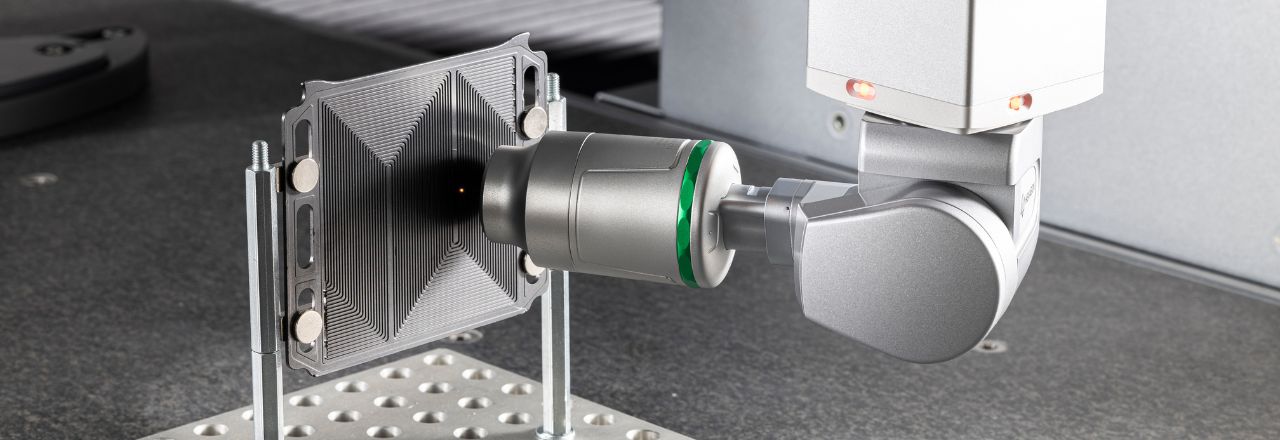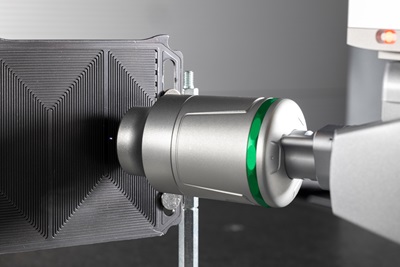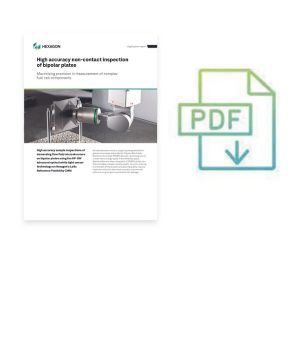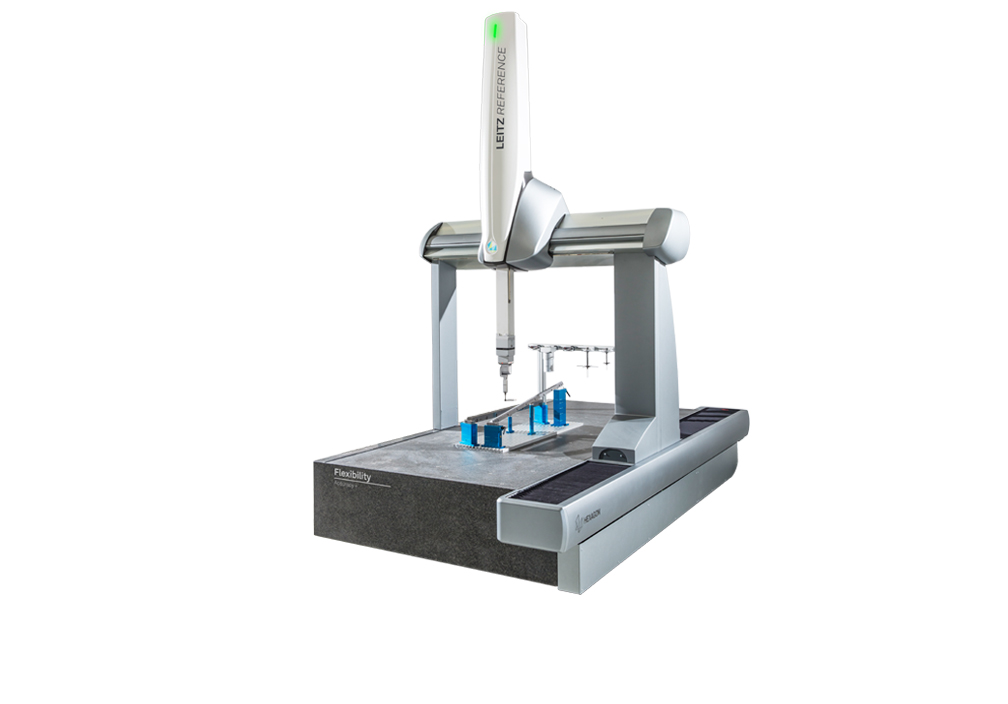High accuracy non-contact inspection of bipolar plates
Maximising precision in measurement of complex fuel cell components

As manufacturers move to support growing demand for greener processes and products, Polymer Electrolyte Membrane Fuel Cells (PEMFC) provide a promising source of alternative energy supply in the eMobility space. Bipolar plates are a key component of PEMFC stacks, but they are highly complex, sensitive parts. As such, ensuring functionality of these parts and assuring quality requires inspection solutions that meet accuracy requirements while ensuring the part is protected from damage.
 Fuel cells generate electrical energy without producing greenhouse gases by converting hydrogen and oxygen into water. Fuel cells provide an alternative to battery electric vehicles typically in larger vehicles like e-busses and e-trucks, but this technology is increasingly used in electric passenger cars as they are advantageous in terms of refuelling time and maximum traveling range. As a stationary application they can also be implemented for fuel cell heating systems. Bipolar plates serve numerous critical functions in this technology, such as distribution of hydrogen and oxygen, providing the electrical conduction between the cells and thermal management. Uneven flow distribution or plane flatness deviations can accelerate the degradation of the fuel cell, leading to shorter service life, reducing the reaction of the gases, and reducing the stack’s performance. In short, bipolar plates have a major impact on the fuel cell’s functionality and service life.
Fuel cells generate electrical energy without producing greenhouse gases by converting hydrogen and oxygen into water. Fuel cells provide an alternative to battery electric vehicles typically in larger vehicles like e-busses and e-trucks, but this technology is increasingly used in electric passenger cars as they are advantageous in terms of refuelling time and maximum traveling range. As a stationary application they can also be implemented for fuel cell heating systems. Bipolar plates serve numerous critical functions in this technology, such as distribution of hydrogen and oxygen, providing the electrical conduction between the cells and thermal management. Uneven flow distribution or plane flatness deviations can accelerate the degradation of the fuel cell, leading to shorter service life, reducing the reaction of the gases, and reducing the stack’s performance. In short, bipolar plates have a major impact on the fuel cell’s functionality and service life.
A high volume of bipolar plates are installed in a fuel stack (some 200 to 400 plates). As such, the plates are thin, sensitive parts with a typical thickness ranging between 0.1-2 mm. The most critical feature to ensure proper gas distribution is the bipolar plate’s flow field. This is a precise microstructure in the form of small flow channels in the sub-millimetre range with steep flank angles.
Bipolar plates require maximal accuracy during measurement and the tolerances of the various features are tight, typically between 20-30 µm. Dimensional parameters like channel width and depth, pitch, flank angle and plate flatness all need to be quality assured, as well as standard geometric features like plate size and inlet/outlet form and position. The steep angles of the flow field channels are hard to access using traditional inspection methods, and it is essential that the material thickness is homogenous and free from fluctuations.
The functional importance of material thickness compounds the challenges of this application, as it is important to maximise accessibility with part fixturing and a flexible sensor solution. In addition, bipolar plates are typically made of demanding materials such as graphite or metal-based coatings that are highly touch-sensitive or reflective.
Combing sensor technologies for maximum accuracy and efficiency
The inspection of bipolar plates requires a flexible solution, with both tactile and non-contact sensors providing the best approach to different feature and material needs. Hexagon’s high accuracy Leitz Reference Flexibility coordinate measuring machine (CMM) offers the multisensor capability to combine the ideal sensor solutions; the HH-AS8-OWT2.5 articulating head, the HP-OW-2.14 chromatic white light sensor, and the HP-S-X1H tactile probe head.
The bipolar plate’s microstructure flow field is measured with the HP-OW chromatic white light sensor, which offers high accuracy and reproducibility in a short cycle. As the flow field channel microstructure is inspected on both sides of the part, the 2.5° wrist offers the required flexibility and accessibility with more than 12 000 individual sensor positions and a large acceptance angle (±30°). Chromatic white light sensor technology is perfect for ensuring that there are no bending effects, scratches, or other such damage affecting the fragile part and its sensitive surfaces.

In addition, the optical sensor offers excellent throughput and high point density. It captures the top and the bottom surface of the channels in a straight scanning line. Due to the large measurement range of 2 mm in regard to the relatively small microstructure, the optical sensor captures the height and pitch of the channels in a continuous straight scanning line. The wrist is positioned in +30° and -30° angular positions to additionally measure the flanks of the flow field channels which can be very steep with angles up to 85° relative to the channel bottom surface. The individual scanning lines of the 0°, +30° and -30° angular positions are segmented and merged together in the powerful QUINDOS software package. This enables generation of a full flow field profile line that provides a foundation for further evaluations such as channel width, flank angle or profile form.
The HP-OW is also ideal for material thickness measurement, which can be achieved with additional profile scans on the opposite side of the part, accessible with a 180° rotation of the wrist. Based on the flow field profile scans from each side of the part, the material thickness can be determined in QUINDOS by evaluating the distance of the opposite scanning lines at a defined point.
The standard geometry measurements are less challenging, but still require a high degree of precision. These features are captured within the same inspection routine using the ultra-high accuracy HP-S-X1H tactile scanning probe head. To save further time and manual effort, the sensors can be exchanged automatically on the indexable wrist. Thus, Hexagon provides a complete and high precise measurement solution to ensure quality of high-end fuel cell bipolar plates.




